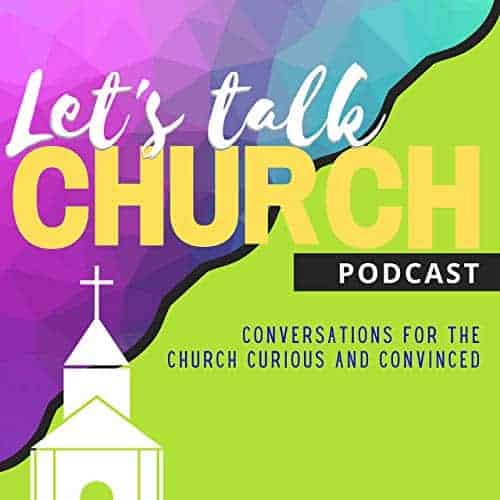As a church, you are already producing engaging content for your audience each week, so starting a church podcast is a simple but powerful way to serve your congregation and reach new audiences. Plus, it’s easy to set up. Since you already have the content, it’s also inexpensive.
In this article, we’re going to explain the benefits of starting a church podcast. Then we’ll show you how to get started.
Why Start a Church Podcast
Church podcasts have the obvious benefit of making your content available to members who couldn’t make it to the service. Whether they are out of town, ill, or otherwise engaged, they can still enjoy your service.
Some numbers may enjoy listening to your service a second time during the week. Or they might like to refer to it months later when they have a question or need guidance.
On-demand availability also means that members can share your service with their friends and family. All they have to do is send a link to your website or your show’s listing in a podcast app. They can play the entire sermon or portions of it to one another for discussion.
A church podcast is also a great way for new members to evaluate your organization before joining. Instead of traveling to your church to hear a sermon in person, they can explore multiple sermons from the comfort of their own home. This is a great way to make new members feel comfortable before joining, as many churches don’t offer on-demand sermons to explore.
Finally, a church podcast creates a permanent archive of your sermons. Your messages are relevant and helpful long after you deliver them, so they shouldn’t be forgotten. Storing them at the podcast creates a record and makes them available to your entire congregation forever.
How to Start a Church Podcast
Starting a church podcast doesn’t require a big investment or a team of media professionals. You can do it with some basic tools and a bit of creativity.
Church podcasts are similar to any other kind of show, so we strongly recommend reading our full guide: How To Start a Podcast: Your Step-By-Step Guide. But here we will give you a brief overview of what you need to do to start a church podcast.
1. Plan your content
Your first step is to determine the type of content you want to provide. Most churches opt to simply record and publish their weekly sermons or regular events (like Bible study). This process is rather simple because you are already producing the content, you just need to record its audio and make it available to your congregation.
However, some churches like to produce specialty content that’s only available on the podcast. This might include interviews, narrative storytelling, panel discussions, religious music, or something entirely new. This type of podcasting can be unique and captivating, but it’s more time-consuming to create.
If you will produce specialty podcast content (not your usual sermons), you’ll need to decide how long your content will be. 30 minutes? An hour? There are some successful podcasts that only last 10 minutes, so choose the duration that’s right for you.
If you plan to simply publish your sermons, you might consider offering a private podcast. This is a show that’s only accessible by your congregation. All you have to do is add your private subscribers email addresses and they will receive an invite to your private podcast. In Castos, making this distinction is just a click of a button.
Furthermore, consider how you could make your church podcast unique. There are a lot of religious-based shows out there, including ones from churches just like yours. If you hope to capture an audience that’s larger than your congregation, you’ll need to come up with a way to make your show stand apart.
2. Choose a hosting provider
You can’t host a podcast on your website, so you need a specialty host. This is where your podcast will “live.” You’ll want a podcast hosting service that offers unlimited number of podcasts, unlimited storage, unlimited episode lengths, generous download limits per pricing tier, and other key features, like analytics, RSS distribution, editing, and transcription.
Obviously, we’re biased here, but we think Castos is the best podcast hosting service. We’re continually developing new features and products to make podcasting simple and pain-free for creators like yourself. Check out all of our features.
3. Record your first episode
How you record your episodes depends on the type of content you create. If you simply record your sermons as you deliver them, all you have to do is put a microphone on the speaker that’s plugged into a recording device (a laptop or smartphone will do). Check out our recommendations for recording software.
If you currently run your sermons through a soundboard or mixer, it’s already in a digital format. You just need to record it with a software tool like Audacity (free) or GarageBand (free for Macs) and run a cable from your mixer into your computer.
If you give your sermon in a big open room, some echoing will be unavoidable, but a quality microphone and some good mic technique will help. Don’t worry! Your audience won’t hold this against you.
4. Edit your episodes
All episodes will require some editing, but how much depends on your preferences. Some church podcasts are fine with imperfect audio quality. Others are willing to invest time, energy, and money into making it perfect.
If you’re using Audacity to record your audio (our recommended editing tool), follow along with our tutorial below for tips on adjusting volumes, adding fade effects, and more:
You’ll definitely want to add some pre-recorded intros and outros to your show. These “bookend” your sermon. The intro introduces the church, show, and episode. The outro thanks them for listening and gives out church notices. For instance, the outro is a perfect place to remind your listeners about church policies, upcoming events, or ways to volunteer.
Furthermore, you may want to add some music. The right music can add a professional touch that improves the listeners’ experience. Just make sure you choose tracks that are free or that you have a license to use. You can add some sound effects, as well, just don’t get carried away.
A quick note on sound quality: Don’t get caught chasing perfection. Your audience cares about your message, not studio quality audio. Don’t spend hours tweaking with levels in your editing software to make it perfect. If it’s understandable, you’re good to go.
5. Publish your episode
Once your first episode is complete, your next step is to upload it to your podcast host. When you add a new episode to your hosting account, it will automatically be added to your RSS feed. Any app or service that uses the RSS feed (like Apple Podcasts, Google Podcasts, and Spotify) will see the new episode.
When you publish your first episode, your hosting service will ask for a few details about your show, such as your title, description, and cover art. These elements are required by the podcast listening apps. Covert artwork is pretty simple. It looks like this:
Tip
We’ve streamlined the process of publishing podcast episodes with our plugin, Seriously Simple Podcasting. It allows you to upload an episode through WordPress when you create a new post, sending your audio file directly to your Castos account. Learn more about Seriously Simple Podcasting.
6. Promote your church podcast
Your final step is to promote your church podcast to the world. This is a big topic if you want to capture listeners outside of your congregation, so we recommend reading our full guide on promoting a podcast. But let’s talk about the most important components of church podcast marketing.
First, list your podcast on the big podcast directories, like Apple Podcasts, Google Podcasts, Spotify, and others. This makes your show available wherever they prefer to listen. New episodes will appear automatically via your RSS feed whenever you upload them to your host. (Your podcast hosting service may do this for you.)
Next, get your episodes on your church website. We recommend creating a new blog post for each episode. Each post should include a podcast player, show notes, and a full audio transcription. This is important for SEO and accessibility.
Finally, create a process to promote your new church podcast often. Here are some simple steps:
- Tell your congregation about it at every meeting.
- Ask your followers to rate and review the podcast on each podcast listening app.
- Promote it often on social media. Post every single episode.
- If you interview anyone, ask them to promote it as well.
- Add the podcast to your website and print literature.
Tip
Promotion doesn’t stop with your existing audience. There’s no reason you can’t have thousands or millions of subscribers (as long as your content is good). Read our podcast marketing guide to learn how to grow exponentially. Learn more.
Start Your Church Podcast Today
Starting a church podcast is a great way to reach a larger audience and keep your congregation involved when they can’t attend a live meeting. With the right technology and a little creativity, you can create a podcast that broadcasts your message and brings your community closer together. Make sure to read our podcast starting guide!






Comments are closed.